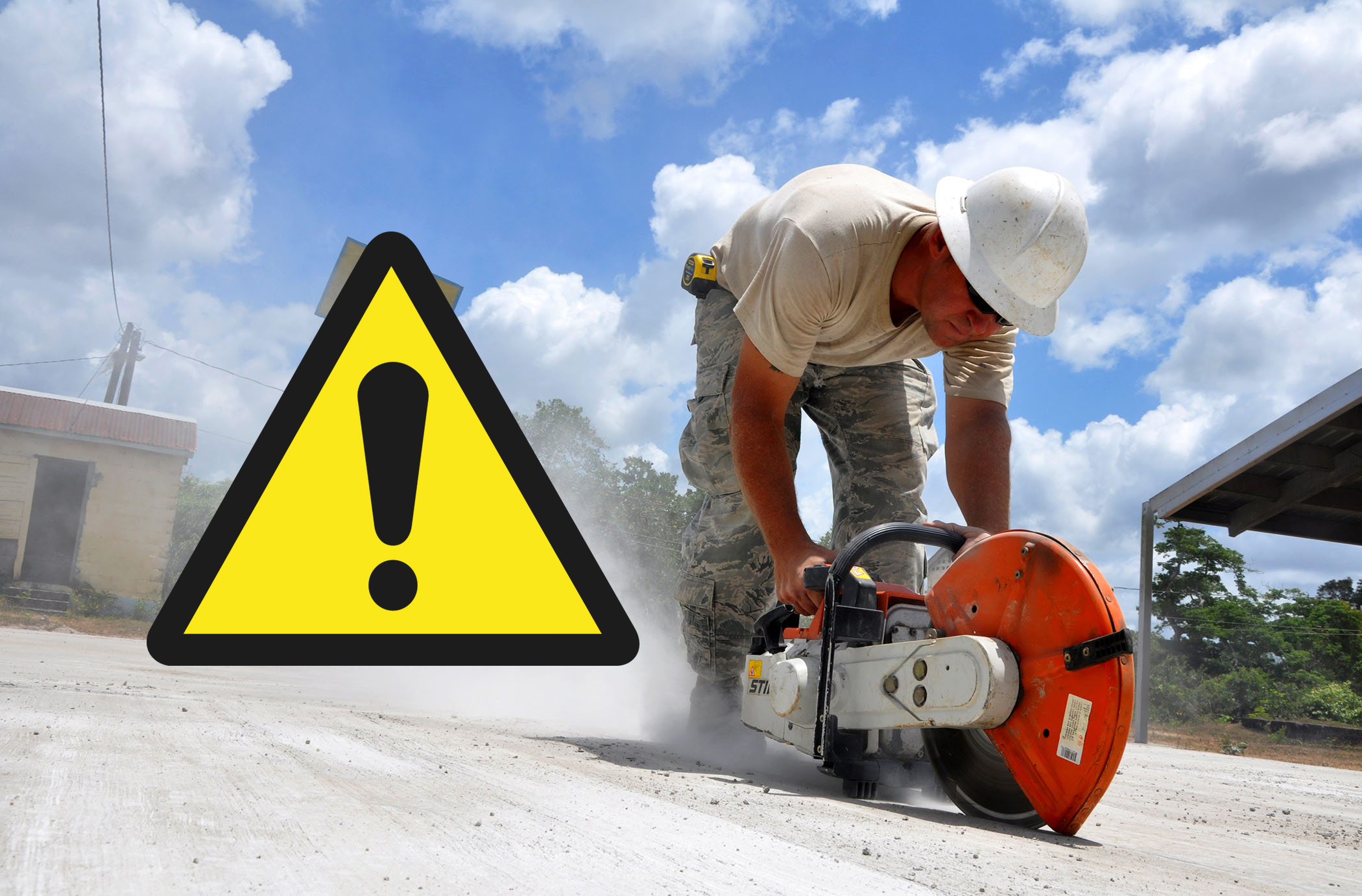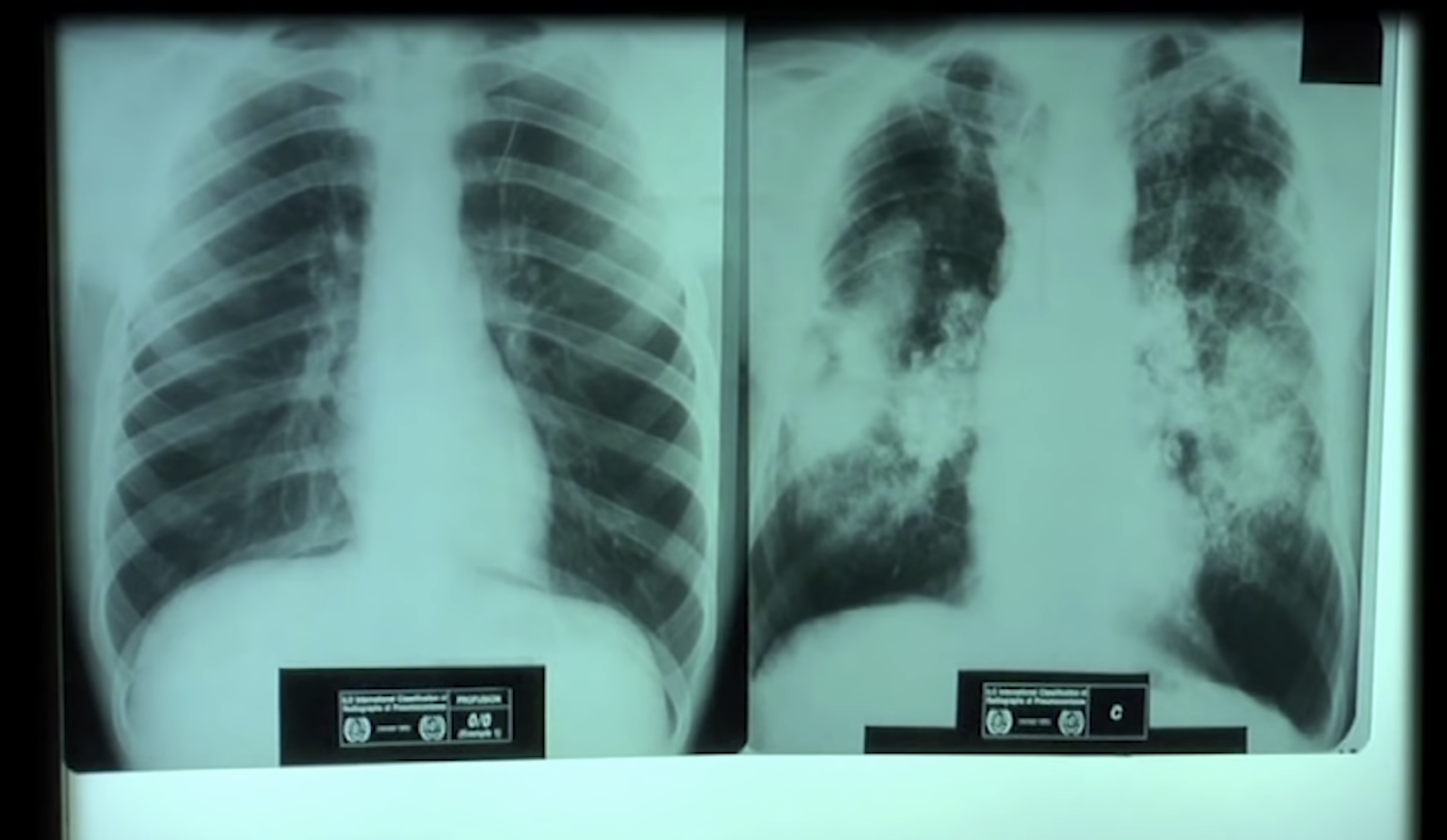
Silica does not normally present a major threat to health because it is bound up in materials and not present in the air we
Above Image courtesy of Toolsarehome.com
Exposure Times
Exposure to silica can be dangerous whether it is a long term exposure or a briefer acute exposure. Exposure to silica for even a few months has been shown to cause serious problems if the levels present are high enough. It is not safe to assume that one is only at risk if working in a field where there is potential for silica exposure over decades.
 On the left, healthy lungs, and the right, lungs inflicted with silicosis. Source: OSHA
On the left, healthy lungs, and the right, lungs inflicted with silicosis. Source: OSHA
Why Silica Is So Dangerous
The reason silica is so dangerous is due to the nature and fine shape of the small particles involves. Our natural mechanisms for cleaning our lungs, which will work for a time for other dangerous substances unless they are overwhelmed, simply cannot cope with silica particles. They become permanently lodged in the lung, where their irritant action can stimulate harmful responses that can lead to scarring and reduced lung function over time.
Effect On Health
Exposure to silica can lead to cancer, as silica is a known carcinogen, as well as silicosis in one of three forms: classic silicosis, accelerated silicosis, or acute silicosis. Classic or chronic silicosis, the most common type, occurs after decades of low-level exposure in work
Accelerated silicosis is similar but can happen after only a few years of exposure, with weakness and weight loss apparent. Acute silicosis can happen after only a few months'
This new video from the Operational Safety & Health Administration illustrates the frightening reality of years of exposure to crystalline silica particles can have on someone's health.
Multi-purpose workplace safety
Echo Barrier is an innovative temporary noise control system designed to mitigate noise in dynamic and sensitive work environments. Its unrivalled durability lends it the ability to also help contain silica dust and other worksite debris.


